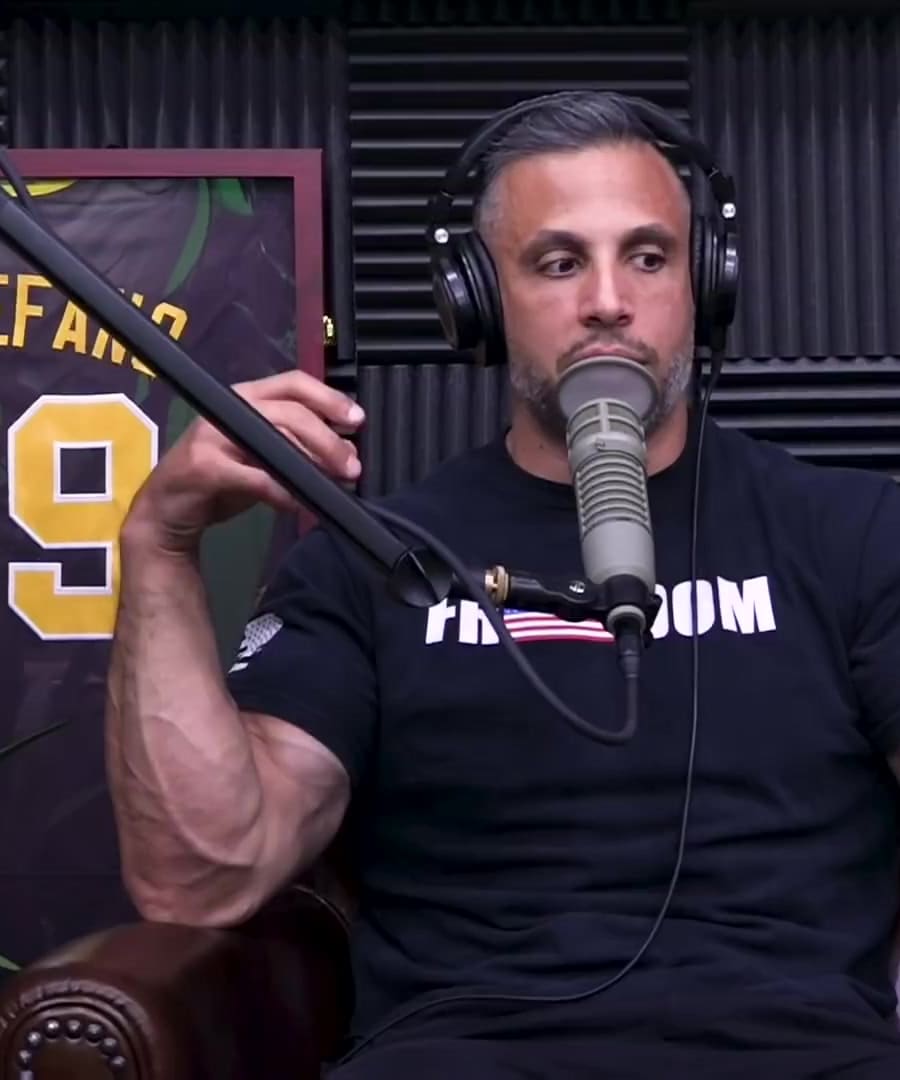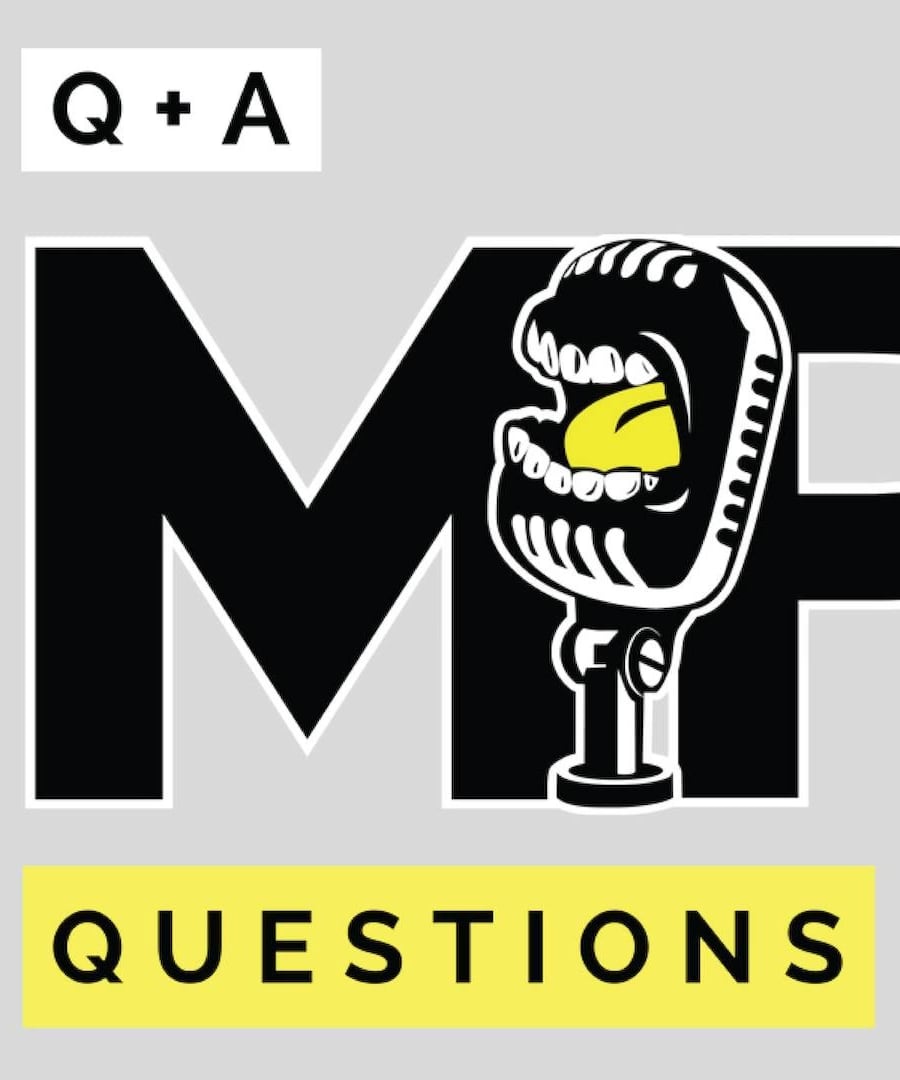Best way to start being a hybrid athlete
Sources:
Starting as a hybrid athlete involves a thoughtful and structured approach, especially if you're transitioning from a period of inactivity or focusing more on one type of athletic activity. The hosts of Mind Pump Podcast, Justin Andrews, Sal Di Stefano, and Adam Schafer, suggest several key steps:
-
Assessment of Current Fitness - It’s crucial to assess your current physical state, including joint health, functionality, and overall strength. This helps to identify areas that need more focus in terms of strength, support, and stability.
-
Light Drills and Familiar Movements - Incorporate light drills that mimic the movements of your sports activities but at a reduced intensity (about 60-70%). This helps your body to become reacquainted with these types of movements without the high risk of injury. For example, if you played basketball or ran track, include easy drills from these sports into your routine.
-
Gradual Increase in Intensity - Avoid the temptation to jump back into high-intensity activities. Gradually increase intensity, which can help prevent injuries and ensure that your body adapts properly.
-
Combining Performance and Mobility Work - Integrating performance work with mobility exercises is important. This combination helps in building a more resilient and capable body that can handle diverse demands from various sports.
These steps serve as a base to safely and effectively develop into a hybrid athlete, ensuring both performance enhancement and injury prevention 1 .
RELATED QUESTIONS-
Summarize If You WORK OUT LESS, You Might Build More Muscle: This Is Why | Mind Pump 1954
In the episode "If You WORK OUT LESS, You Might Build More Muscle: This Is Why" from Mind Pump Podcast, the hosts, , , and , discuss nuances in workout routines that can surprisingly lead to better muscle growth. Here is the summary:
-
Effective Exercise Strategy:
- Emphasizing the 'right dose' of exercise, suggesting that more is not always better. Building muscle efficiently often means figuring out the optimum amount of exercise, not the maximum.
-
Performance Supplements:
- Discussion about supplements such as Organifi Peak Release and others that could potentially enhance workout results and recovery.
-
Athletic Training Tips:
- Key tips on fitness progress, injury prevention, and properly transitioning back to athletic activities. This includes advice for those moving from bodybuilding to powerlifting.
-
Specialized Athlete Training:
- Insight into specialized training routines for different types of athletes, such as dancers, emphasizing how strength training can be tailored to meet specific athletic needs.
-
General Fitness and Health Tips:
- Suggestions on managing weight gain, dealing with exercise and hormonal imbalances, and overcoming unhealthy exercise habits. They also touch on the importance of phasing training to match body needs and cycles.
The main takeaway is the concept that less can be more when it comes to training. By focusing on the quality and precision of each exercise session, athletes can achieve greater muscle growth and better overall fitness outcomes without overtraining.
RELATED QUESTIONS-
Could under eating while strength training and running cause you to look flabby versus looking fit
Sources:
Yes, undereating while engaging in strength training and running can result in a less toned and potentially 'flabby' appearance, rather than a fit and sculpted look. This effect stems from several interconnected factors:
-
Muscle and Fat Loss: When you undereat and over-exercise, you're likely to lose muscle at the same rate as you are losing fat. This loss of muscle mass can significantly affect your metabolism and body composition. Adam Schafer from explains that if you lose 10 pounds from undereating and excessive cardio, potentially 40% of that weight loss can be muscle, which can contribute to a 'flabbier' appearance despite weight loss 1.
-
Insufficient Recovery: Under-eating results in inadequate nutrient intake, which is crucial for recovery and muscle growth. If the body doesn't receive enough nutrients, especially protein, it can't repair and build muscle effectively. Moreover, inadequate energy intake will leave you feeling depleted rather than energetic and fit 2.
-
Stress and Adaptation: As points out, being in a chronic state of stress due to under-eating and high exercise volumes can prompt the body to hold onto fat as a survival mechanism. When the body is stressed and perceives a shortage of food, it may reduce muscle mass because muscle is calorically expensive to maintain 3.
-
Overtraining: Engaging intensely in both strength training and running, particularly with inadequate nutrition, can lead to overtraining. Overtraining affects the body's hormonal balance and can deteriorate muscle tissue further complicating your fitness and body composition goals 2.
To look fit and toned, it's crucial to consume a balanced diet that supports your training demands, focusing on adequate protein and overall caloric intake, alongside a well-structured exercise plan. Such an approach promotes muscle maintenance and growth while losing fat, which contributes to a more sculpted appearance.
RELATED QUESTIONS-
What’s an ideal hybrid training regime to run with maps anabolic
Sources:
For an ideal hybrid training regime to run alongside MAPS Anabolic, you might consider integrating elements of MAPS Performance. This approach caters to those looking to enhance athletic performance while still focusing on muscle and strength building.
Here's a suggested hybrid routine:
Phase 1: MAPS Anabolic Foundation
- Focus on the foundational lifts as prescribed in MAPS Anabolic.
- Training Days: Monday, Wednesday, Friday.
Phase 2: Mobility and Athletic Performance
- On non-lifting days (Tuesday, Thursday), incorporate mobility workouts from MAPS Performance.
- These sessions focus on enhancing athletic performance and include movements that improve joint health and functional strength.
Active Recovery
- Utilize the weekends for active recovery, focusing on activities that you enjoy and that promote recovery, such as light swimming, yoga, or a leisurely walk.
Additional Considerations
- Include trigger sessions from MAPS Anabolic if needing more activity on rest days.
- Emphasize proper nutrition and recovery due to the combined intensity of strength training and athletic drills.
This regimen leverages the strength-building focus of MAPS Anabolic, while MAPS Performance incorporates mobility and functional movements, enhancing overall athletic ability and preventing injury 1.
Always tailor the intensity and volume based on your recovery and energy levels, and consider consulting with a fitness expert to ensure the program is adapted to your specific needs and goals.
RELATED QUESTIONSWhat nutrition plan supports a hybrid training regime?
Sources:
For a hybrid training regime, such as combining elements of strength and mobility from both MAPS Anabolic and MAPS Performance, it's crucial to follow a well-structured nutrition plan that supports muscle growth, recovery, and energy levels.
Key Components of the Nutrition Plan:
-
Balanced Macronutrients:
- Protein: Essential for muscle repair and growth. Aim for about 1.0 to 1.5 grams per pound of bodyweight, especially critical after strength training sessions.
- Carbohydrates: Fuels both strength and performance workouts. Include complex carbohydrates like whole grains and vegetables to provide sustained energy.
- Fats: Necessary for hormone regulation and energy. Focus on healthy sources like avocados, nuts, seeds, and fish.
-
Hydration:
- Stay hydrated, as both strength and mobility workouts demand optimal hydration to maintain performance and aid in recovery.
-
Timing of Meals:
- Consider nutrient timing—having carbohydrates and protein before and after workouts. This can enhance recovery and provide the necessary energy for your training sessions.
-
Overall Caloric Intake:
- Ensure you're consuming enough calories to support your activity level. This is crucial as under-eating can lead to decreased performance and slower recovery.
-
Consultation with a Professional:
- As emphasized in the clip, consulting with a knowledgeable coach can be very beneficial. They can provide a tailored plan based on your specific needs and goals, which can include detailed dietary recommendations to complement your training 1.
Although flexibility in the diet is necessary, having a well-detailed plan and sticking to it will significantly contribute to achieving optimal results in both muscle growth and athletic performance. Always ensure the plan is adjusted based on your progress and recovery needs.
RELATED QUESTIONS-
Can you explain nutrient timing further?
Sources:
Nutrient timing focuses on the strategic intake of nutrients, particularly around exercise sessions to enhance performance and recovery. According to , nutrient timing is particularly impactful around training times. He highlights the use of insulin just before training to effectively shuttle nutrients into cells and aid muscle recovery. Insulin, he notes, also has the added benefit of protecting against muscle protein breakdown and managing cortisol levels, which directly helps in reducing muscle breakdown and promoting muscle synthesis, thus supporting faster recovery and better muscle gain 1.
The core strategy behind nutrient timing is to optimize the body's physiological needs during and after exercise, essentially 'turbocharging' your training effectiveness and recovery, as explains. By controlling insulin levels during these critical windows, athletes can maximize muscle protein synthesis and limit breakdown, which is essential for those aiming for muscle growth and enhanced recovery.
RELATED QUESTIONSCan you share example hybrid athlete routines?
It appears there are no specific clips detailing example routines for hybrid athletes directly from Mind Pump Podcast at the moment. Hybrid athletes typically require a blend of strength, endurance, and flexibility training, often customizing their routines to balance these disciplines effectively. If detailed examples become available or if there are updates, I can provide those insights in the future.
RELATED QUESTIONSHow do hybrid athletes organize training splits?
Sources:
Hybrid athletes often benefit significantly from incorporating full-body workouts into their training regimes, as emphasized by . Full-body workouts can be particularly effective due to their efficiency and the consistency they promote in working all muscle groups. It's noted that full body routines are typically superior in muscle building, metabolism boosting, and strength building compared to traditional body part splits. Specifically for hybrid athletes, hitting each muscle group with sufficient frequency — about two to three times per week — is crucial, even if one opts for a split routine 1.
Furthermore, it's mentioned that while more specific splits like upper/lower or push/pull/legs might work for some, a full-body workout three times a week (e.g., Monday, Wednesday, Friday) is generally optimal for about 70% to 80% of people, particularly those who aren't training for competition but seek general fitness gains. The advantage of a full-body regimen is that it accommodates varying levels of consistency, which is typical for most individuals, ensuring that all muscle groups are worked regularly regardless of weekly fluctuations in gym attendance 2.
RELATED QUESTIONSHow do elite hybrid athletes train?
Sources:
Elite hybrid athletes focus significantly on optimizing movement efficiency and capacity, especially given the stringent demands of their multiple sport involvements. A guest expert on the , Cory Schlesinger, discusses tailoring training to enhance performance without overtaxing the body, particularly for athletes involved in high-speed and high-load sports. He highlights the need to focus on mechanical loads and reduce the complexity of strength training exercises to focus more on tension. This method allows athletes to adapt more efficiently without the muscular fatigue that could hinder their performance in their sports 1.
Additionally, Schlesinger advocates integrating movement strategies that are often outside the typical training paradigms of specific sports. For example, he draws inspiration from ballet and freestyle wrestling to develop innovative training methods that enhance the athletes’ range of motion and ability to perform under the stress of repeated competitions. This philosophy enables athletes to train effectively across different disciplines while still maintaining peak condition throughout their seasons 1.
RELATED QUESTIONSWhat does Cory Schlesinger recommend for hybrid athletes?
Sources:
Cory Schlesinger recommends several specific strategies for training hybrid athletes, which emphasize efficiency and adaptability:
-
Regulating Mechanical Loads: Schlesinger suggests simplifying exercises to focus on mechanical loads rather than complexity. This involves regressing exercises to simpler forms like leg presses or Smith machine squats to focus purely on the stress and tension needed for adaptation, sparing athletes from unnecessary fatigue that could hinder their sports performance 1.
-
Innovative Movement Strategies: Incorporating movement strategies that are not typically associated with the athlete's specific sports is also beneficial. Schlesinger draws on diverse disciplines such as ballet and freestyle wrestling to develop training methods that enhance an athlete’s range of motion and ability to perform under various competitive stresses 1.
-
Deceleration Training: He emphasizes the importance of deceleration training to help athletes gain better control and stability in their movements. Techniques like high-velocity eccentric training and tempo training are used to achieve this without causing excessive joint impact. This includes exercises like kettlebell drop lunges and Bulgarian split squats with controlled tempos 2.
These strategies are designed to optimize the performance of hybrid athletes by enhancing their movement efficiency and capacity while minimizing the risk of injuries.
RELATED QUESTIONS-
What are common challenges for hybrid athletes?
Sources:
One of the common challenges for hybrid athletes involves managing the delicate balance between achieving top performance and the high risk of injury. The speakers in the Mind Pump Podcast describe this as balancing on a razor's edge. Here's how this challenge manifests:
-
Injury Compensations: When an athlete suffers an injury, it often leads to the other parts of the body compensating for that injury, which can lead to overloading and further injuries. For example, if one leg is injured, the other may take on more strain, increasing the risk of injury on the healthy leg [1].
-
Recovery Processes: Proper recovery is crucial, yet challenging, especially for athletes driven to return to their previous performance levels quickly. This rush can prevent full recovery and lead to a cycle of repeated injuries [1].
-
Finding the New Edge: After an injury, the athlete’s “edge”—the fine line they walk between peak performance and injury—changes. Without adequate recovery and adjustment time, athletes might repeatedly encounter the same injuries or new ones by not appropriately recalibrating their limits [1].
Understanding and addressing these challenges is crucial for maintaining long-term health and performance in hybrid athletics.
RELATED QUESTIONS-










